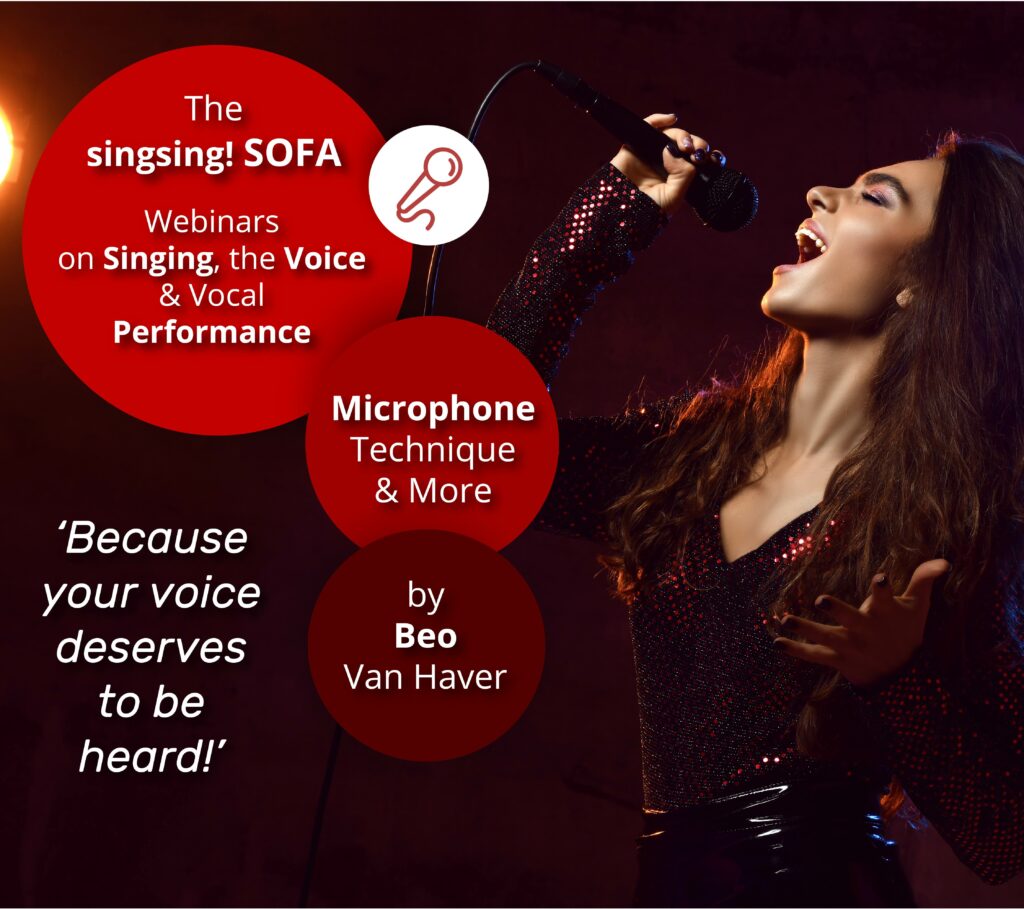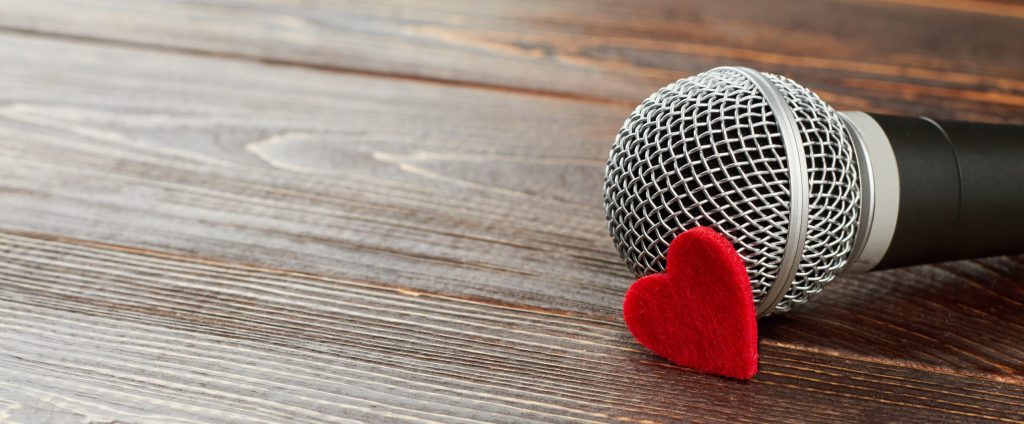
Microphone Technique
17/12/2013
If you’re not a classical singer, chances are big you’re using a microphone when on stage. Knowing how to work with it is crucial, if you want to make the most out of your vocal performance.
The spheres
The spheres are a way to describe the distance you create between your microphone and your mouth.
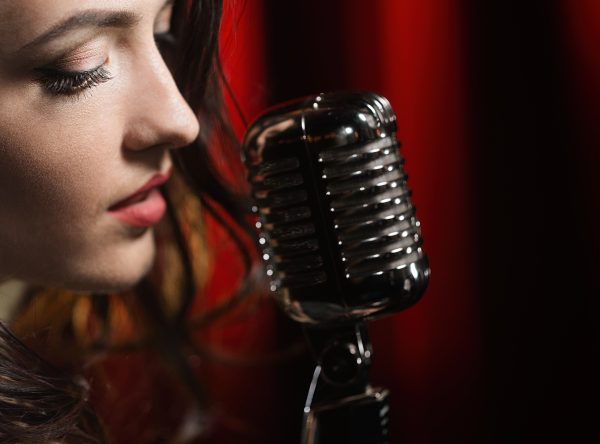
SPHERE 1
- Closest to the mic.
- Only suitable for very low volumes.
- Bass boos / Proximity effect: Low frequencies are amplified more than middle and high, which results in more “body” in the voice. Neutral with air works perfectly here. Sphere 1 makes it sound rich and broad, which is impossible without a microphone.
SPHERE 2
- This is the sphere you use the most.
- All frequencies of your voice are picked up equally.
- When you sing the loudest, pull the microphone away a bit more than when you sing more quietly
SPHERE 3
- Here, the mic only picks up some higher frequencies.
- You are more audible acoustically than amplified.
- Hence only suitable for intimate performances where you want to add an acoustic element.
Exercise: Practice singing a dynamic song in a microphone while looking at the lights of the input-volume on the mixing console. Your task is to keep them at the same level at all times! Quite frustrating in the beginning, but oh my, how you get to know the spheres like this 😉

Holding your microphone
Hold it a bit angled at the level of your chin. Above all sing straight into the microphone unless you want to obtain a special effect.
Holding the capsule of the microphone or covering it with your hand / arm like Ronnie James Dio creates a special muffled / muddy sound that you might like, but beware of feedback (the screeching sound coming from the speakers…). You also make the job of your sound technician a lot more difficult like this, and you really don’t want to get them into a bad mood 😉 Never – ever aim the microphone towards the speakers or monitors, as that will create feedback for sure!
Exercise: Practice singing with a microphone with the sound (backing track + your voice) only coming through your headphones, not a speaker. Now you hear what the audience will hear, without hearing your voice acoustically, so you can practice functionally.
Buying a microphone
Every microphone is unique. They all favor different frequencies and thus change your sound. Take your time to choose and don’t economize. It is a crucial lengthening of your voice that will define your sound substantially. If you’re a beginner at this, don’t hesitate to ask advice to the people at the shop, friends, colleagues,… Use extra sets of ears that will help you to know what to listen for when trying out microphones. Tip for beginners: Yes, Shure SM58 provides good quality for your money. But it’s not because it’s the most popular (best marketed…) microphone, that it also works for your voice! Test as much microphones as you can!
There are roughly 2 types of microphones that are used the most for amplifying voices. Make sure you know what you need, when choosing your mic! For many live performances, you will need a dynamic microphone. As its pick up pattern is cardioid – it will pick up sound mostly at the front of the microphone, it is suited for louder bands. A condenser microphone is much more sensitive and will also pick up the sound of the other instruments surrounding you. Hence, these microphones are mostly used in studio or for more intimate live performances.
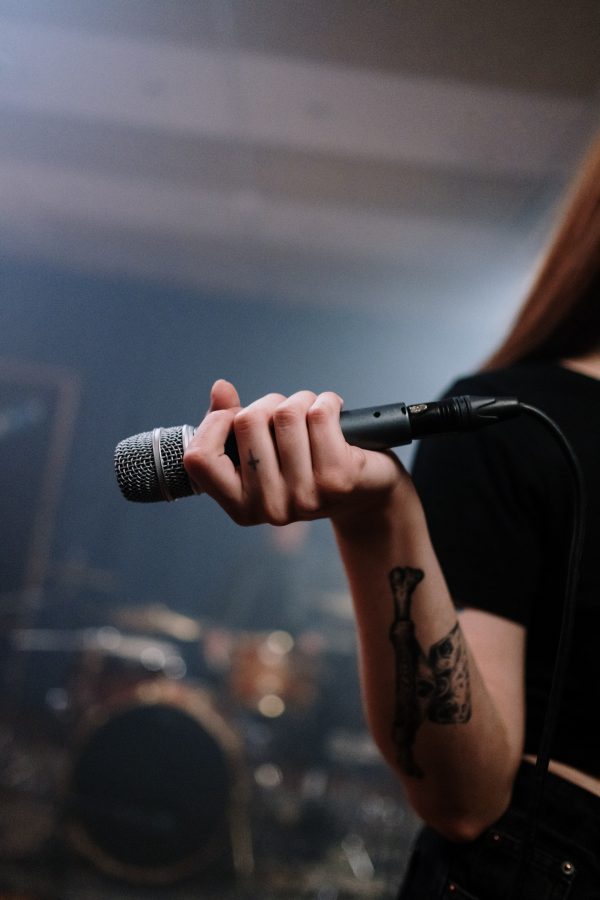
General tips
- Make sure you don’t drop your microphone and protect it (also from moist) during transport.
- Allow your mic to heat up a bit before using it, when it has been stored in a cold place, because condense will ruin it.
- Smoke is bad for your voice ànd for your microphone. The tarnish on the membrane of the mic will dampen high frequencies.
- During a sound check, you sing a song. Don’t hit or blow into your mic, especially not a sensitive condenser mic, as it could damage the diaphragm.
- Don’t forget the batteries + spares if your mic needs them… I know what I’m talking about 😉
What happens after the microphone?
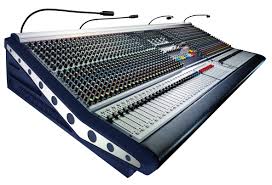
Make sure you have some basic knowledge of equalizing, compression and effects. By doing so, you will be able to communicate clearly with your sound technician during the sound check and make them perfectly clear how you want your voice to sound. Don’t leave it all up to them as it is quite possible that their artistic opinion doesn’t match yours.
Because this person will define your sound, it is very important that you build a good relationship with them. Say hi, introduce yourself, be polite, communicate clearly and say thank you afterwards. It’s incredible how many musicians forget this… The sound technician is an equally important member of the band as your guitarist or you, the singer!
Have fun with your microphone!
Do you want to learn how to use your microphone and everything that happens after functionally?
Subscribe to the Library, watch the recording of the webinar Microphone Technique & More and learn all there is to know about it!
As always, feel free to send me your thoughts, questions, and feedback in the comments below this blog, via the contact form or in the singsing! online community
Cordially,
Sarah

